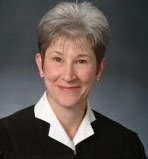5/26/2008
California Court Weakens Ban on Unmarked Traffic PoliceCalifornia appeals court ruling allows unmarked police cars to make traffic stops for any offense other than speeding.

An appellate court last Thursday weakened a ban on using unmarked cars to issue traffic citations that had stood for nearly eighty-five years. A three-judge panel of the California Court of Appeal for the Third District made the change in the case of Paul Dyer, a man accused of driving under the influence of alcohol (DUI).
Around midnight on February 9, 2006, Placer County Sheriff's Sergeant Jess Phariss was patrolling Highway 267 in an unmarked police car. Phariss grew suspicious when he saw the Jeep Cherokee belonging to Dyer driving slowly. He followed the Jeep and claimed that it crossed the highway's center line several times. Phariss initiated a traffic stop, noted signs of intoxication and had a second Sheriff's Deputy who had been called to the scene administer sobriety tests. A handheld breath testing device produced a reading of 0.07 -- under the legal limit -- for Dyer. Phariss deemed this "inconclusive" and proceeded to arrest the man anyway. A second breathalyzer test administered at 1:07am indicated a 0.11 reading -- above the legal limit. It is possible for such readings to increase over time as alcohol is absorbed into the bloodstream.
A trial court judge threw out the DUI conviction as proceeding from an unlawful arrest and ordered the Department of Motor Vehicles (DMV) to overturn the agency-imposed driver's license suspension. The DMV appealed the court ruling.
Since 1923, California has outlawed the police tactics upon which many other states rely to conduct speed traps. One key provision of this statute prohibits traffic police from using any vehicle not distinctively marked. In most cases, this means the traditional black and white design. In her ruling last week, Justice M. Kathleen Butz cited a 1991 decision explaining the legislature was "motivated by a desire to eliminate clandestine methods of traffic enforcement designed to augment local revenues through exorbitant fines."
In this case, the three-judge panel ruled that because the law only applies to traffic police, it did not apply to Phariss who played only a "supervisory" role. The second officer who had been called to the scene made the actual arrest. Moreover, the justices refused to apply the speed trap law to other common traffic offenses.
"The chief goal of speed trap legislation [is] to restrict clandestine enforcement of the speed laws by officers not clearly identified as law enforcement personnel," Justice Butz wrote. "The offense of driving under the influence does not 'involve the speed of a vehicle' as defined in section 40805."
The appeals court ordered a new trial court hearing to consider the evidence of whether Dyer was actually intoxicated at the time he was driving. A copy of the ruling is available in a 40k PDF file at the source link below.


